While Pakistan struggles towards its goal of achieving a homogenous monoculture with Islamism at its core, India has struggled equally to define nationalism, within its tradition of worship at the altar of diversity. Both of these imagined utopias can become delusional, self- contradictory and inconsistent with a functional nation state. In Pakistan, the fissiparous tendencies are due to forced oppression of ancient cultural and ethnic identities. In India the same tendencies are due to pretension that there was no ancient Indian cultural identity, but only a subset of invader or migratory identities, each of which must be promoted irrespective of the cost to the nation.
articles
Pakistan’s Zero Sum Game – Some Historical Perspectives – Part II
Published
9 years agoon
By
ihar
Author: Dr. Subroto Gangopadhay
Press Release: indiafacts.org/pakistans-zero-sum-game-historical-perspectives-part-ii/
In the concluding part of our series, we describe Pakistan’s role in Khalistan and continuation of Operation Tupac, beginning with the theocratic cleansing of Kashmiri Hindus, all the way upto Uri massacre, with the major events in between. Pakistan is consistent in its goals and India’s response equally consistent with its flawed thinking.
Sikh discontent spurs Khalistani movement
As East Pakistan’s civil war of independence entangled India, in 1971, another important movement was silently taking shape among the Sikhs, the largest Indian diaspora that migrated to the UK, US and Canada in the period that preceded and followed Indian Independence in 1947. Working as drivers, conductors, transporters, laborers and farmers, they retained their strong roots. Gradually, they began to face discrimination, especially in the UK where employers demanded that they remove their turbans, beards and other symbols of personal faith. Harassed and hurt, they went to the Indian High Commission seeking help. This was not forthcoming as Prime Minister Nehru’s Government, unlike the Israelis, had a hands-off approach to the diaspora, particularly after they accepted foreign citizenship. Fearful that there was no power to defend their faith, the “Sikh Home Rule” movement was launched by the UK based Sikh bus drivers and conductors, under Charan Singh Prachi’s leadership. Subsequently, Dr. Jagjit Singh Chauhan, former finance minister and deputy speaker of Punjab migrated to the UK and assumed leadership of the movement. He renamed the “Sikh Home Rule” into the movement for “Khalistan” that took birth just prior to the Bangladesh liberation war of 1971.
Pakistan aligns with anti-Indian Khalistani movement
Even prior to Chauhan’s arrival in UK, the Pakistani Embassy and the US embassy in London, had established a working relationship with the Sikh home rule movement. The arrival of Chauhan, added momentum. Chauhan got good exposure in US as the CIA and ISI started their own campaign against India, alleging human rights violations by India against Sikhs in Punjab and Government indifference to the plight of diaspora in the west. This PSYWAR campaign countered Indira Gandhi’s attempt to draw the world’s attention to the genocide in East Pakistan. Henry Kissinger, the then director of the National Security Council, had his staff manage Chauhan’s media exposure. On October 13, 1971, an advertisement in the New York Times called for creation of the new state of Khalistan. The advertisement was paid for by the Pakistani Embassy in Washington DC, as per Indian intelligence. President Yahya Khan invited Chauhan, warmly received him and helped him gain stature as the leader of the Khalistani movement. The CIA and ISI propaganda campaign on behalf of Khalistan continued, until 1977 when Indira Gandhi lost the election to Morarji Desai in response to her enacting the Emergency Rule in India in 1975.
Zia- Hul- Haq usurped power in 1977, became President of Pakistan in 1978 and forged close friendships with Khalistani secessionist leaders, such as Ganga Singh Dhillon in US. ISI became more interested in the new emerging militant Sikh Organizations such as Dal Khalsa, Babbar Khalsa and International Sikh Youth Federation (ISYF). Gajendra Singh of Dal Khalsa hijacked an Indian airlines flight to Lahore, in 1981. The plane and passengers were returned, but not the perpetrator. Gajendra Singh was asked to stay on at Nankana Sahib (80 Kms from Lahore), the birthplace of Guru Nanak and one of the holiest of Sikh pilgrimages, so that he could interact with visiting pilgrims and radicalize them. He was eventually tasked with looking after camps in Pakistani Punjab and NWFP, established to train Khalistani terrorists. The terrorists were armed by the ISI with weapons and improvised explosive devices thanks to the flow of arms from the US, for Afghan Mujahideens and free flow of funds from the US and Saudi Arabia. With wholehearted support from Zia ul Haq and ISI in the 80s, Sikh militancy flourished.
Khalistani terrorism peaks with Pakistani support
Indira Gandhi authorized Operation Bluestar in June 1984, as conservative measures failed to persuade entrenched militants to vacate the Golden temple complex. This was a massive operation to clear the Golden Temple of assembled militants under the command of Jarnail Singh Bhindranwale. A large number of lives were lost, the holy shrine of Akal Takht was seriously damaged and a deep wound was inflicted on the Sikh psyche. In October 1984, Indira Gandhi was assassinated by her Sikh bodyguards from Delhi Police. A shameful collapse of law and order followed in Delhi as news of the Prime Minister’s assassination spread. Rampaging mobs massacred numerous innocent Sikhs, destroyed their property and terrorized them in the national capital, with the Congress Government seemingly complicit. The Sikhs, among the greatest defenders of India, recoiled in horror and still seek justice. Pakistan-supported Khalistani militants swore revenge. Babbar Khalsa operatives based in Vancouver planted bombs that exploded on the Air India flight, Kanishka in 1985 killing 307 passengers and 22 crew members off the Irish Coast. Simultaneously, two other passengers at NarIta Airport in Tokyo succumbed to explosions in luggage loaded at Vancouver. The mastermind, of these attacks, Talwinder Singh Tomar, the head of Babbar Khalsa of Canada, escaped from Canada and found sanctuary in Pakistan. Lal Singh, the leader of International Sikh youth federation, who hatched a plot to assassinate Rajiv Gandhi the same year, on his state visit to US as Reagan’s guest too escaped to Pakistan.
Operation K-K winds down and Operation Tupac winds up
At home, General AS Vaidya, the Chief Of Staff of Indian Army and the executor of Operation Bluestar in 1984 retired on 31 January 1986 after which he was gunned down in Pune, on Aug 10, 1986, by Sikh extremists. The fires of Khalistan burned for more than ten years after that, though it is claimed Benazir Bhutto did not carry forward Zia’s policy despite ISI chief Hamid Gul’s advice to her that keeping Punjab active would be equivalent to maintaining two divisions in Punjab at no expense to the Pakistani tax payer. Pakistani support of Khalistan was retribution for the loss of the 1971 war. Besides, destabilization of Punjab would help Pakistan annex Kashmir with greater ease. The ISI code named this combined strategy Operation K-K. The Punjab militancy gradually began to lose steam in the 90s during Prime Minister Narasimha Rao’s tenure. Still, the Mumbai blasts of 1993 remained as a stark reminder of Pakistan’s commitment to the use of terror. While the Khalistan movement scaled down, Kashmir erupted and Operation Tupac gained strength.
Theocratic cleansing of Kashmiri Hindus within Hindu-majority India
As opposed to Operation Gibraltar, Operation Tupac used the new Jihadi Militia instead of disguised Pakistani Army regulars. It was, and is, a well-sustained, low cost, well-executed project of Kashmir’s annexation, through terrorism and insurgency. The first spectacular success of Operation Tupac was cleansing of the Kashmiri Pandits from the land of their forefathers. In 1986, Ghulam Mohammed Shah seized power from his brother-in-law, Farooq Abdullah, and proceeded to construct the famous Shah Masjid within the premises of an ancient Hindu Temple in the secretariat area of Jammu. The people protested, and the incumbent Chief Minister, retaliated by instigating people in the valley proclaiming “Islam Khatrey Mein Hai”. The Muslims went on a rampage and the Shah government was dismissed by Jagmohan, the Governor, in 1986. The Islamists lost the Kashmir election in 1987 (as in 1983). This was followed by launching of Tupac in 1988, as the free will of Kashmiris was not acceptable to Pakistan.
The cleansing of Pandits began with the murder of prominent Hindu citizens (such as Tika Lal Taploo by JKLF), followed by open threats to Hindus to leave their home and hearth from the terror proxies of Pakistan such as Hizb- ul Mujahideen. The Hizbul asked Hindus to leave, through open advertisements in local papers such as Aftab and Al Safa. During the administration of Farooq Abdullah in 1990, acting upon the advice of Mufti Muhammad Saeed, Prime Minister VP Singh re- appointed Jagmohan as the Governor of Jammu and Kashmir. The same day, January 19, 1990, Farooq Abdullah resigned as Chief Minister, as anticipated by Mufti Muhammad. A single day’s power hiatus with a Governor en route and no Chief Minister, proved fateful. On that day, Dec 19, 1990 Islamic chants echoed in the valley and Muslim crowds wielding guns ran amok. Hindus who survived the night had no recourse but to leave the land where their forefathers had lived millennia before Islam’s birth. This was the most shameful example of a government abdicating responsibility to its citizens, making them refugees within their own country. Operation Tupac built upon this unbelievable victory against a nation of one billion people. This was not just an ethnic cleansing. This was a theocratic cleansing by a Majority Muslim community of a minority Hindu community of the same ethnicity, within a Hindu majority nation.
Pakistani amends constitution to persecute Ahmadiyas
It should be no surprise that Pakistan had done the same theocratic cleansing not only to its own Hindu population, but even its Ahmadiya (declared Non Muslim by Pakistani Legislators in 1974), Shia and Christian populations. Pakistan, as per the second constitutional amendment enacted in 1963, became the Islamic Republic Of Pakistan. In 1974, it became a state where the parliament itself took upon the religious duty of excommunication. Dr. Abdus Salam, one of the world’s greatest theoretical physicists, father of Pakistan’s Science and Technology (including Nuclear Program) and a member of the Ahmadiya community, left Pakistan in protest against the Z A Bhutto Govt, declaring Ahmadiyas to be non-Muslims, through Parliamentary legislation in 1974.
ISI-sponsored terrorist organizations multiply
Focusing on Kashmir, the ISI systematically created Lashkar-e-Taiba, Jaish- e-Mohammed and Harkat- ul- Mujahideen, while supporting Indian Mujahideen, and Hizbul Mujahideen. Jammu Kashmir Liberation front (JKLF) had conditional support, which was withdrawn during periods when they eschewed violence or demanded an independent Kashmir. This undercuts Pakistani claims of support to Kashmiri self-determination and points to the larger geopolitical aims of the Pakistan or Sino-Pak axis.
In 1984 India gained territory in the Siachen Glacier conflict, the highest battleground of the world at 20,000 feet. Operation Meghdoot gave India control of the unmarked Glacier North of the Ceasefire line between India and Pakistan that terminated at NJ 9842. The ceasefire at Siachen took effect in 2003.The battle was the result of improper cartography besides Pakistani Government, granting permits to foreign teams to climb the glacier, implying control of an unmarked area.
India captured Maulana Masood Azhar, of Harkat –ul- Mujahideen in 1994. An early attempt by Al Faran in 1995, to secure his release in exchange for kidnapped foreign tourists failed. Success finally came for HuM in 1999 when the Vajpayee Government released Azhar, Omar Sheikh and Mustaq Ahmed Zargar, in exchange for release of the 192 passengers and crew of hijacked flight IC 184. Azhar did not return to HUM, but went on to establish the Jaish-e-Mohammed in 2000, a group that is more radical that HuM and perhaps the deadliest terror group in Kashmir. Omar Sheikh arranged funds for Mohammed Atta, a key conspirator of 9/11 attacks in the US and was also involved in the kidnapping and beheading of Daniel Pearl. Azhar remains a public figure in Pakistan. JeM was banned officially, even in Pakistan since 2002, but merely changed its name to Khuddam-ul-Islam. JeM’s avowed aim is to merge Kashmir with Pakistan and through the Kashmir gateway enter India to liberate Indian Muslims and drive away non-Muslims from the subcontinent, including Americans.
Pakistan successfully executes plan to bleed India by a thousand cuts
1999 saw a spectacular strategic success for Operation Tupac at Kargil. Winters in Kargil are harsh and by a gentleman’s agreement both Indian and Pakistani forces used to withdraw from their bunkers in winter and return only in summer. Musharraf and ISI betrayed India, while Vajpayee negotiated peace. Pakistani troops and irregulars captured unoccupied Indian positions in the winter of 1998-1999. RAW was caught napping and Indians only got wind of it, when shepherds informed Indian military about strangers occupying their bunkers. The Kargil War was fought in the summer of 1999. India won the war though it was an embarrassing diplomatic and intelligence failure for India. Kargil was thought to be a Siachen payback.
The Indian Parliament attacks in 2001 was an effective fidayeen strike by the JeM and LeT under the guidance of the ISI, that killed 14 people including 5 terrorists. Pakistan had by this time become a nuclear power. ISI had a role here as well. The agency had smuggled Abdul Qadir Khan from Holland from where the sensitive technology was stolen. He had, as it emerged, created a clandestine network for the proliferation and exchange of nuclear technology and material with China, Iran, North Korea and Libya. From the standpoint of Pakistan, becoming a nuclear power was a dream come true. Though, the establishment formally laid the blame for illegal proliferation at A Q Khan’s door, it begs the question why A Q Khan is the only person in the history of Pakistan, who has been awarded the country’s highest civilian honor Nishan-E-Imtiaz twice (1996 and 1999) under two different regimes, after having received the Hilal- E- Imtiaz, the nation’s second highest honor earlier in 1989. Even though, he was alleged to have sold nuclear secrets unknown to the state, no money was ever found and the scientist lived on modest means. It is hard not to see the ISI’s unseen hand here.
The feather in Pakistan’s cap was 26/11 Mumbai attacks by the LeT in 2008. This massive, daring attack was systematically planned over a long time. This attack caught Indian security and law enforcement flat footed. It took days for the country to quell the attack and neutralize the terrorists. By then, 161 Indian citizens had been executed, one of Mumbai’s iconic landmarks turned into a battlefield while India was caught between mourning the dead and defending its honor in full view of the world. The weakness in the system was exposed again, and lack of consequences, convinced Pakistan of India’s paralyzed resolve. While all the attackers ultimately died, the puppet masters continue their work unhindered in Pakistan. India had been invaded on this occasion through the seas.
The network between Pakistani Military, intelligence agencies, Jihadi terror affiliates and their Indian extensions like Indian Mujahideen, evolved over decades. Their plan to bleed India by a thousand cuts, by and large has been successful.
Pathankot and Uri attacks in 2016 were higher milestones for the continuing operation Tupac, because these were attacks on large fortified Indian military bases and not soft civilian targets. Their significance and message is clear. Pakistan remains convinced that an escalating terror strategy is not only feasible but advisable, given not only India’s tepid verbal responses to terrorism, but its inability to hold on to the gains of conventional war. The one aberration of a surgical strike has bucked the trend and sowed come confusion in Pakistan while the expected clarity in India has been obscured by the ensuing politics.
Large swathes of the Indian politicians and media inflict their own thousand cuts on the nation. This will continue until mechanisms are found to reduce their disproportionate power over the nation’s destiny. The electorate in India will again have to prove more sagacious than the forces manipulating them.
Mohammed bin Qasim has a place of glory in the history of Pakistan while his memory has dimmed in India. It is worth remembering that there were 14 Arab expeditions to Sindh and neighboring parts as recounted by GM Syed, prior to the eventual success of Qasim in 712 AD and the entry of Arab Imperialism on Indian shores. Qasim was 17 when he attacked Sindh. Indians often take pride in the valor of their defending Kings from Raja Dahir Sen to Prithviraj Chauhan. The Islamic Republic of Pakistan correctly interprets their version of history as the saga of invading heroes of Islam, who keep attacking until they conquer. Pakistan’s Kashmir policy reflects this historical understanding. India’s flawed defensive response is equally consistent with its own historical perspective. India makes heroes of martyrs and Pakistan adores only victors.
Conclusions:
*Perpetual defense is a doomed strategy. Qasim came in 711CE after fourteen futile earlier expeditions by others, and succeeded. Thirteen centuries is a long time to learn a simple historical fact that a persistent offense will eventually overcome the defense. Operation Tupac is succeeding and persistence will lead to victory.
* Nations can only survive history by learning to win when challenged. In any war it is preferable to be a decisive victor than a valorous martyr. Strength dissuades enemies, weakness is inviting to them.
* Citizens who do not hold the nation above themselves are fundamentally allies of the nation’s enemies.
* Solutions to problems between nations exist only if they have a common framework. Otherwise, stability is determined by power hierarchies.
* For Pakistan this is a zero sum game, retreat is not an option.
The author thankfully acknowledges the contribution of Sahana Singh and Rajkumar Vedam of IHAR to this series.
Image Credit: PIB
Disclaimer: The facts and opinions expressed within this article are the personal opinions of the author. IndiaFacts does not assume any responsibility or liability for the accuracy, completeness, suitability, or validity of any information in this article.
You may like
articles
CONSTRUCTING GENDER IDENTITIES IN DEATH : RETHINKING MORTUARY ARCHAEOLOGY THROUGH THE EVIDENCE OF SINAULI
Published
1 day agoon
October 30, 2025By
Suprabho Roy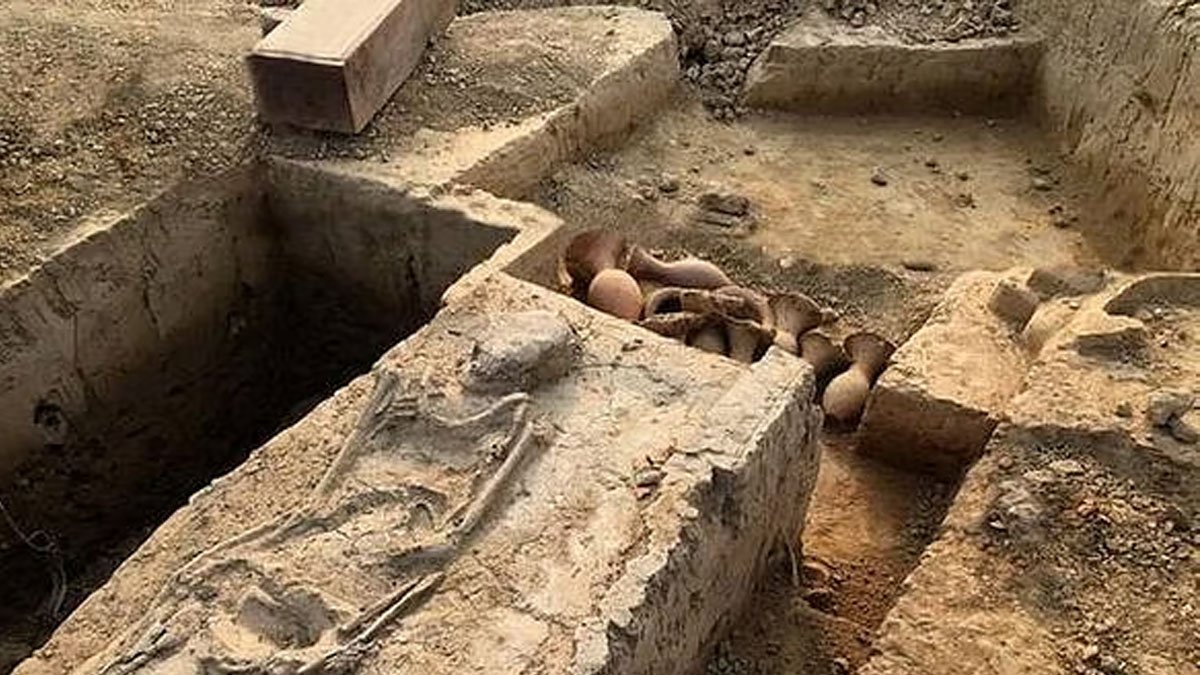
The archaeological site at Sinauli in Uttar Pradesh has provided significant insight into ancient burial practices, gender identities, and social hierarchy in South Asia. The evidence uncovered at Sinauli challenges long-held assumptions and offers fresh perspectives on mortality, gender roles, and elite status in ancient Indian society.
Location and Historical Context
Sinauli is situated in the Baghpat district of western Uttar Pradesh, lying within the fertile Upper Ganga-Yamuna Doab region. It is associated with the Ochre Coloured Pottery (OCP) culture, which dates back to the early second millennium BCE. This site gained attention due to its unique burial practices, especially those involving women and the material assemblages found with their graves.
Overview of Excavations
The Sinauli excavations were initiated in 2005 under archaeologist D.V. Sharma, and further work was conducted in 2018 by Dr. Sanjay Manjul. In 2005, archaeologists uncovered 116 burials, typically oriented north-south, along with ochre-colored pottery. The 2018 excavations revealed even greater complexity, including wooden coffins adorned with copper sheets, rectangular boxes, antenna swords, helmets, shields, pots, and controversial wheeled vehicles—leading to a debate over whether these were chariots or carts.
Types of Burials
Sinauli yielded four primary burial types:
– Symbolic burials without skeletons.
– Primary burials with full skeletons.
– Secondary or fragmented burials.
– Multiple burials containing fragmented remains.
Gender Distinctions in Burial Practices
A significant contribution of Sinauli is its challenge to conventional views on gender and mortuary archaeology. Certain burials, notably those identified by Asko Parpola, show that elite women were sometimes interred in richly decorated coffins with martial symbols such as swords, shields, and wheeled vehicles. Coffins for women featured steatite inlay and were often covered, in contrast to men’s coffins, which generally had copper sheathing and were left uncovered. Such differentiation suggests elaborate symbolism surrounding gender and possibly ritual seclusion or heightened sacredness for women in death.
One highly debated aspect is the absence of feet in Burial-1, which might suggest less earthly mobility or represent a transformation from earthly to transcendent status.
Rethinking Weaponry and Gender
The presence of weapons, such as copper antenna swords and shields, in women’s graves at Sinauli has prompted scholars to reconsider rigid notions of gender roles. These martial objects could signal the dead’s authority—either as warriors or ritual leaders—thus broadening our understanding of gender within ancient funerary contexts. Interestingly, such elaborate martial symbolism is less prevalent in the male burials at Sinauli.
Symbolism of Coffins and Elite Status
Coffins at Sinauli, rare in South Asian archaeology, were more than mere containers; they symbolically transformed the deceased into sacred beings. Their intricate decoration reflects considerable labor, resources, and craftsmanship, indicating elite status and the possibility of gendered authority within the social hierarchy.
Conclusions and Implications
The burial evidence from Sinauli emphasizes material distinctions that reveal social stratification, hierarchy, and constructed gender roles. While the idea of women warriors remains debated, the presence of martial symbols with elite women points towards complex rituals and conceptions of social power in death. Sinauli thus stands out as a crucial site for rethinking gender identities, social class, and the symbolic aspects of funerary practices in ancient India.
articles
Rediscovering Sutanuti: IHAR WB CHAPTER’S Second Heritage Walk
Published
2 days agoon
October 29, 2025By
Suprabho Roy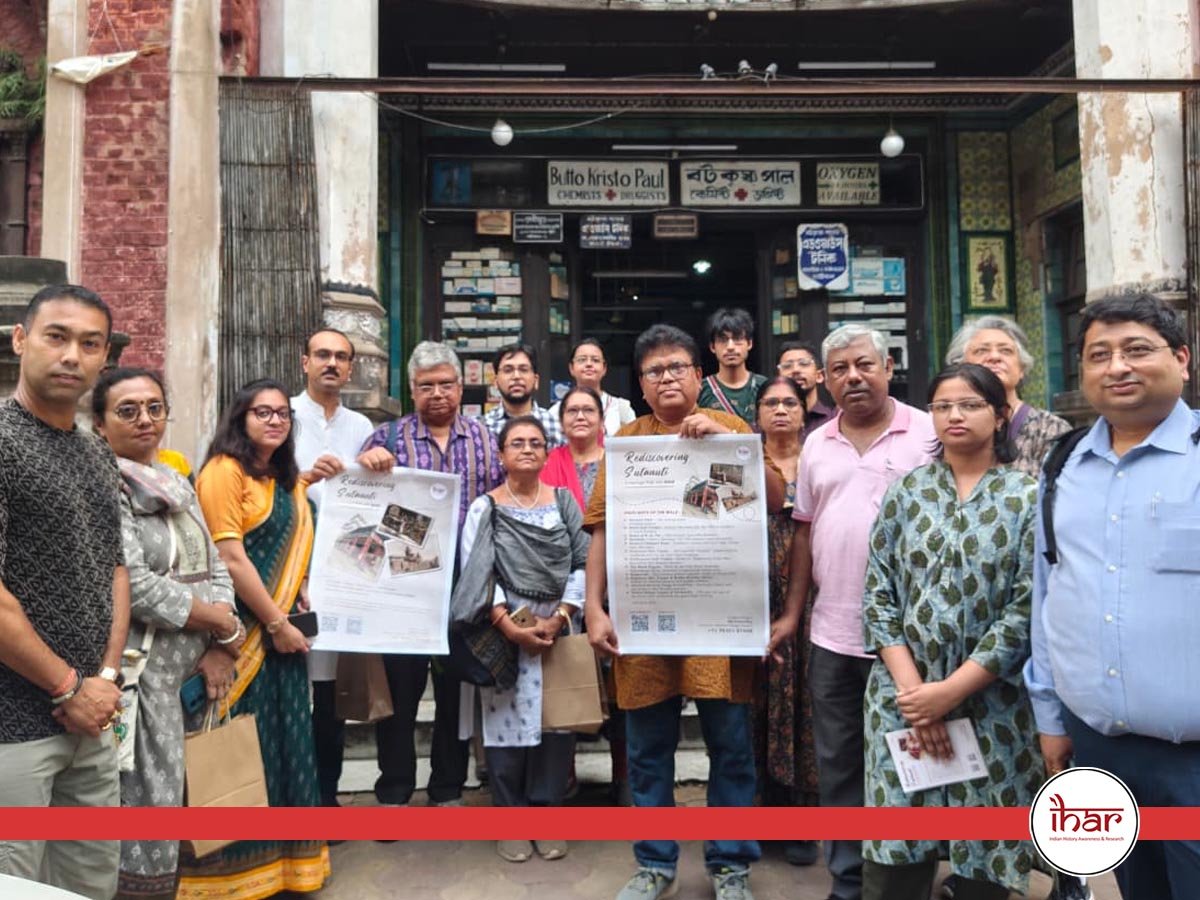
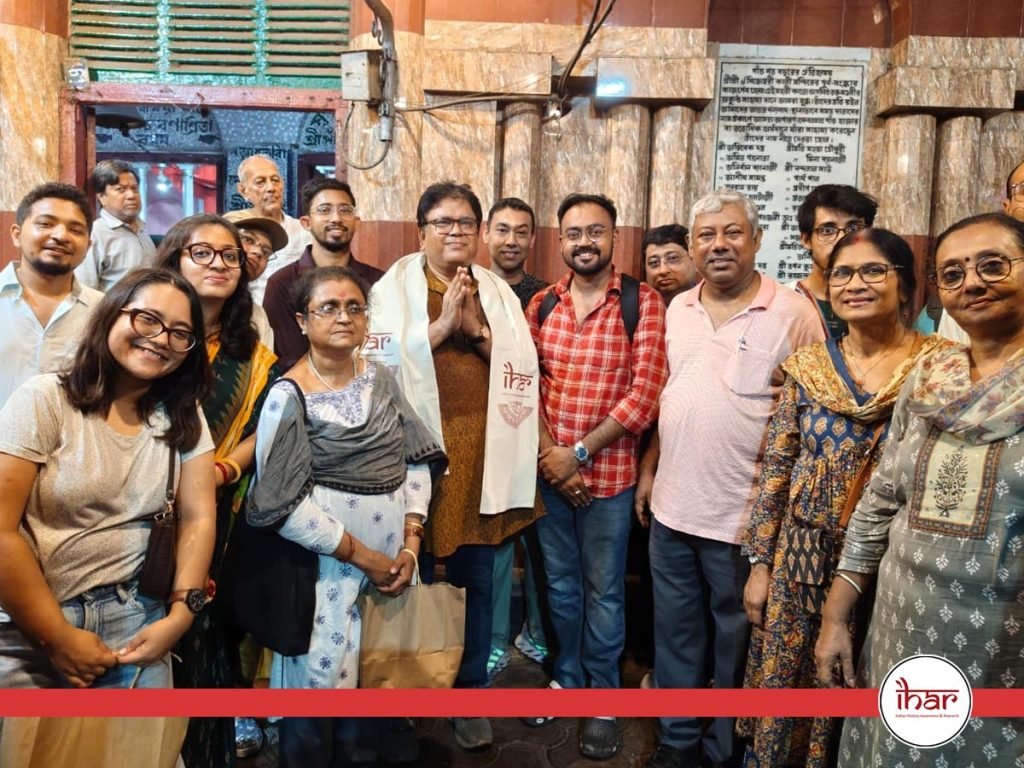
On Sunday, October 26, 2025, the organization Indian History Awareness and Research (IHAR) embarked on its inaugural heritage walk, titled “Rediscovering Sutanuti.”
Dedicated to the study, research, preservation, and public awareness of Indian history, IHAR has long aimed to connect people with the layers of India’s historical and cultural legacy. This heritage walk marked a significant step in that direction.
Why Sutanuti?
The choice of Sutanuti as the focus of IHAR’s first heritage walk was profoundly symbolic.
It was here, on August 24, 1690, that Job Charnock, an officer of the East India Company, is believed to have landed—a moment that would reshape the destiny of Bengal and, indeed, the entire Indian subcontinent.
Although the Company had visited Sutanuti earlier, it was this arrival that initiated a chain of events culminating in nearly two centuries of colonial rule, lasting until August 14, 1947.
On November 10, 1698, the East India Company entered into an agreement with the Sabarna Roy Chowdhury family, acquiring the zamindari (lease rights) of three villages—Kalikata, Govindpur, and Sutanuti—for an annual rent of ₹1300.
This agreement laid the foundation for the rise of Calcutta, though Charnock himself never witnessed it, having passed away in 1693.
Over 335 years later, the Sutanuti of 1690 and that of 2025 appear worlds apart.
Historians still debate the precise locations of Sutanuti Ghat, where Charnock’s ship is believed to have anchored, and Sutanuti Haat, the bustling market once held twice a week for the sale of cotton yarns and threads.
It was this very market that enriched the Seths and Basaks, the early inhabitants of Calcutta, through the textile trade.
Though no physical trace of that port or market survives today, scholars generally agree that Sobhabazar corresponds to the original Sutanuti region.
Accordingly, IHAR chose this locality for its first heritage walk—a symbolic return to the city’s historical roots.
The legacy of Sutanuti lives on in names like Haatkhola (“the open market”), a term derived from the old marketplace and still preserved in local designations such as Haatkhola Post Office.
Similarly, through the efforts of Sutanuti Parishad, the Sobhabazar Metro Station was officially renamed “Sobhabazar Sutanuti.”
Even in the absence of the old market, these surviving names echo the deep emotional and cultural resonance Sutanuti continues to hold for the people of Calcutta and Bengal.
⸻
Highlights of the Walk
The heritage walk took participants on a journey through Sutanuti’s remaining landmarks and forgotten corners, each revealing a fragment of Calcutta’s layered past.
B. K. Pal’s House
The first stop was the residence of B. K. Pal, the pioneering Bengali manufacturer and seller of medicines in the 19th century.
His most celebrated creation, Edward Tonic (1887), became a household remedy for fevers and stomach ailments—common and often fatal in colonial Calcutta—earning him a lasting place in Bengal’s medical history.
Shwet Kali Temple
Participants then visited the Shwet Kali Temple on Sobhabazar Street, nearly 300 years old and among the three oldest white Kali temples in Bengal.
Originally a shrine for dacoits, it later became a site of domestic worship. The deity here is distinctive—white in color, two-armed, tongue inside the mouth, and standing over Virupaksha and Kalbhairav, without the usual garland of severed heads.
Raja Janakinath Ray’s Mansion
The walk next stopped at the grand mansion of Raja Janakinath Ray of the Bhagyakul Ray family, prosperous traders from Dhaka and Calcutta.
Built in the 19th century, a part of this palatial building now serves as the Jorabagan Traffic Guard office, while descendants of the Ray family still occupy another section.
Chitpur Road (Rabindra Sarani)
Participants then walked along Chitpur Road, now Rabindra Sarani, regarded as Calcutta’s oldest road, dating back nearly 500 years.
Originally extending from Chitpur to Kalighat and later to Halisahar, the path once cut through dense forests inhabited by wild animals and robbers—an incredible contrast to today’s bustling thoroughfare.
Rameshwar Shiva Temple
Next came the Rameshwar Shiva Temple, built around 1700 by Nandaram Sen, the first native tax collector under the British official Mr. Sheldon.
Standing 80 feet tall, the temple mirrors the Aatchala style of the Kalighat Kali Temple and houses a six-foot-high Shivalinga.
Kumartuli and the Artisans
The walk then entered Kumartuli, where artisans were crafting Jagaddhatri idols.
Participants met Amit Ranjan Karmakar, a rare collector and restorer of vintage radios, tape recorders, and gramophones—all maintained in working order.
Radhagobinda and Baneshwar Shiva Temples
The Radhagobinda Temple and the Aatchala Baneshwar Shiva Temple, built by Bonomali Sarkar, another British-era official, were the next stops.
While the Radhagobinda Temple remains in fair condition, the Baneshwar Shiva Temple lies in neglect, its once-fine terracotta work fading amid weeds.
Kaviraj Gangaprasad Sen’s House
The group then visited the home of Kaviraj Gangaprasad Sen, the eminent 19th-century Ayurvedic physician who migrated from Bikrampur (Dhaka) in 1840.
Revered for his skill, he once treated Sri Ramakrishna Paramahansa and famously predicted that the saint’s illness was incurable—a prophecy now part of Bengal’s spiritual lore.
Dhakeshwari Temple
The Dhakeshwari Temple in Kumartuli houses a 800–1000-year-old ashtadhatu idol, originally enshrined in Dhaka by King Ballal Sen.
After Partition, the idol was smuggled to Calcutta in 1948 and relocated to its present temple in 1950, where it continues to be worshipped.
Madanmohan Temple
The majestic Madanmohan Temple, established in 1761 by Gokul Chandra Mitra, came next.
Once spread across 56 bighas, the temple houses a black stone deity associated with a legend involving King Chaitanya Singh of Mallabhum.
Its Raas and Annakut festivals are still celebrated annually.
Siddheshwari Mata Temple and the Black Pagoda
The final stop was the Siddheshwari Mata Temple in Baghbazar, believed to be over 500 years old.
Founded by a monk named Kalibor, it later came under the worship of the Chakraborty family and their descendants.
The goddess, affectionately known as “The Ginni Maa of Baghbazar,” was revered even by Girish Ghosh and Sri Ramakrishna, the latter once offering tender coconuts for the recovery of Keshab Chandra Sen.
Across the street stands the Black Pagoda, constructed between 1725 and 1730 by Govinda Ram Mitra, the second native revenue collector after Nandaram Sen.
Standing originally over 165 feet tall, it once surpassed even the Ochterlony Monument (Sahid Minar) in height before being partially destroyed in the cyclone of 1737.
Its surviving fragments still whisper tales of Sutanuti’s lost grandeur.
⸻
A Journey Through Memory
Thus concluded IHAR’s first heritage walk—a journey through the forgotten heart of Sutanuti, where every lane, temple, and crumbling mansion still bears the faint echo of Calcutta’s beginnings.
Though time has erased much of the physical landscape, the spirit of Sutanuti endures—in its names, in its memories, and in the hearts of those determined to rediscover it.
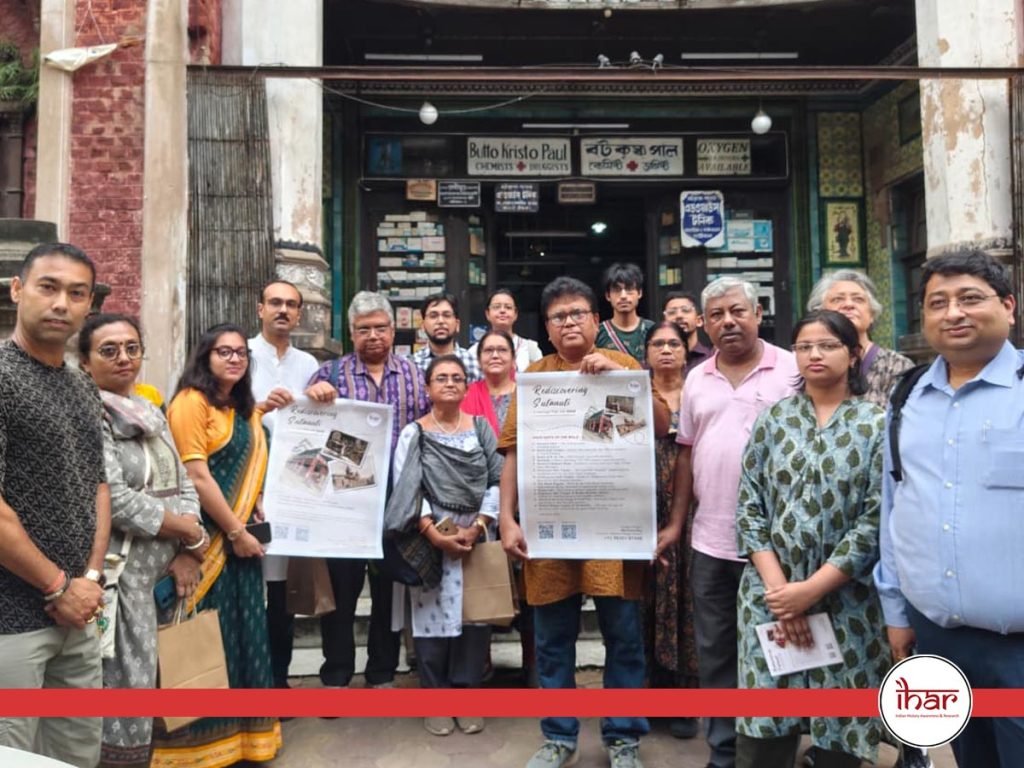
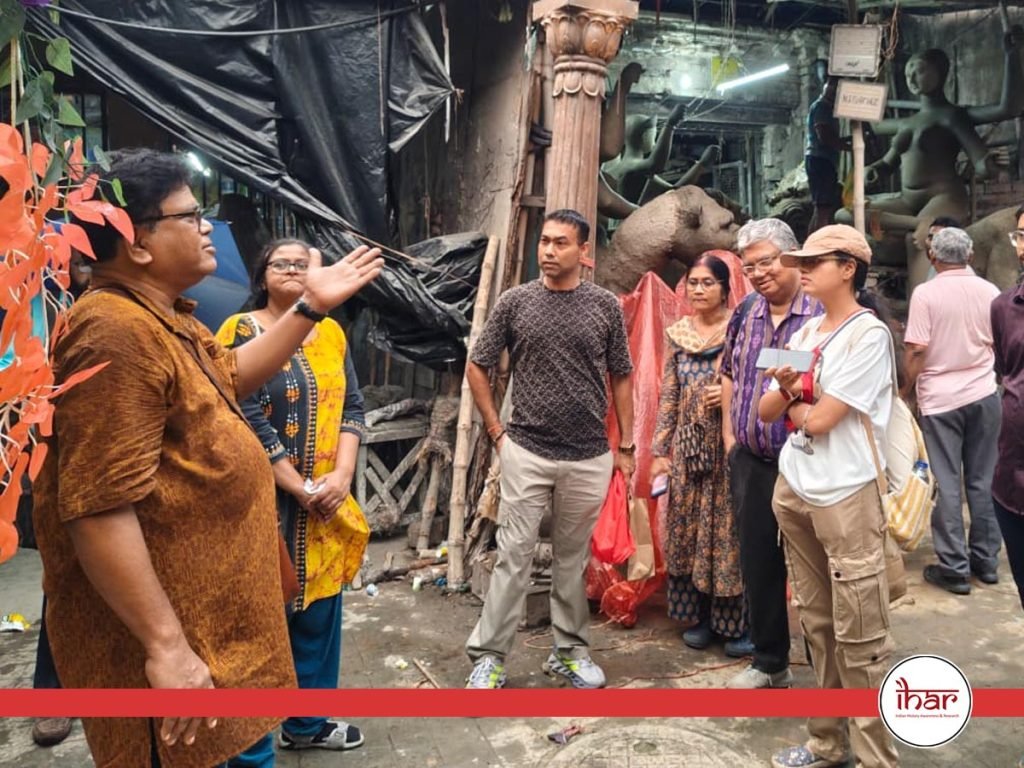
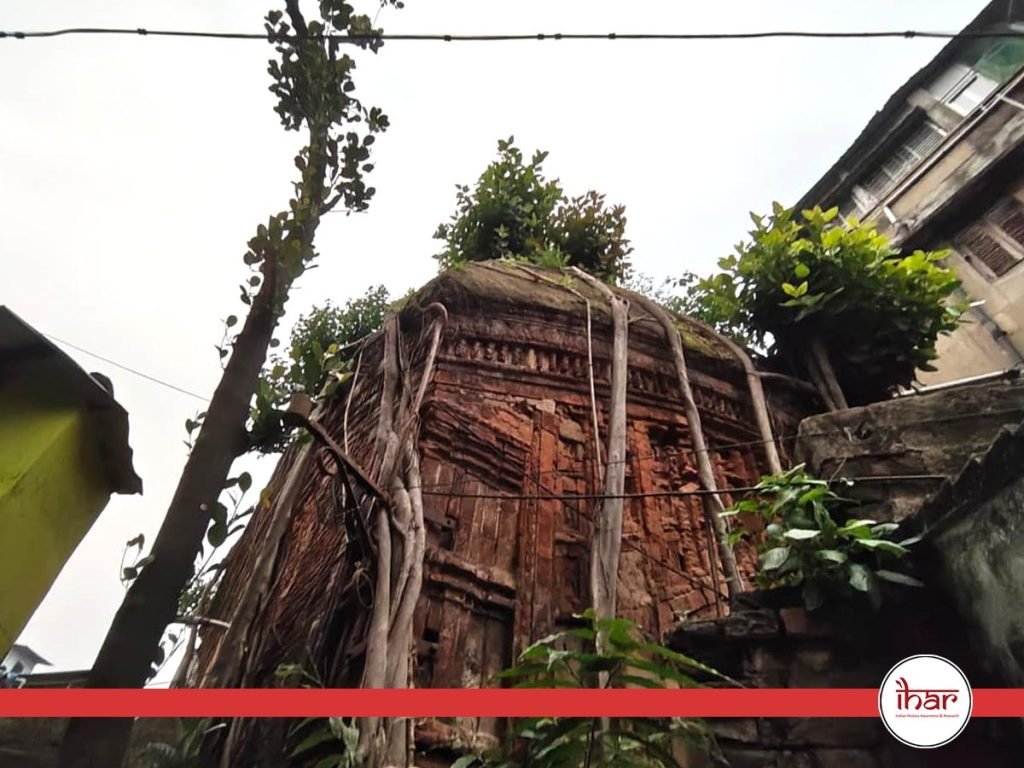
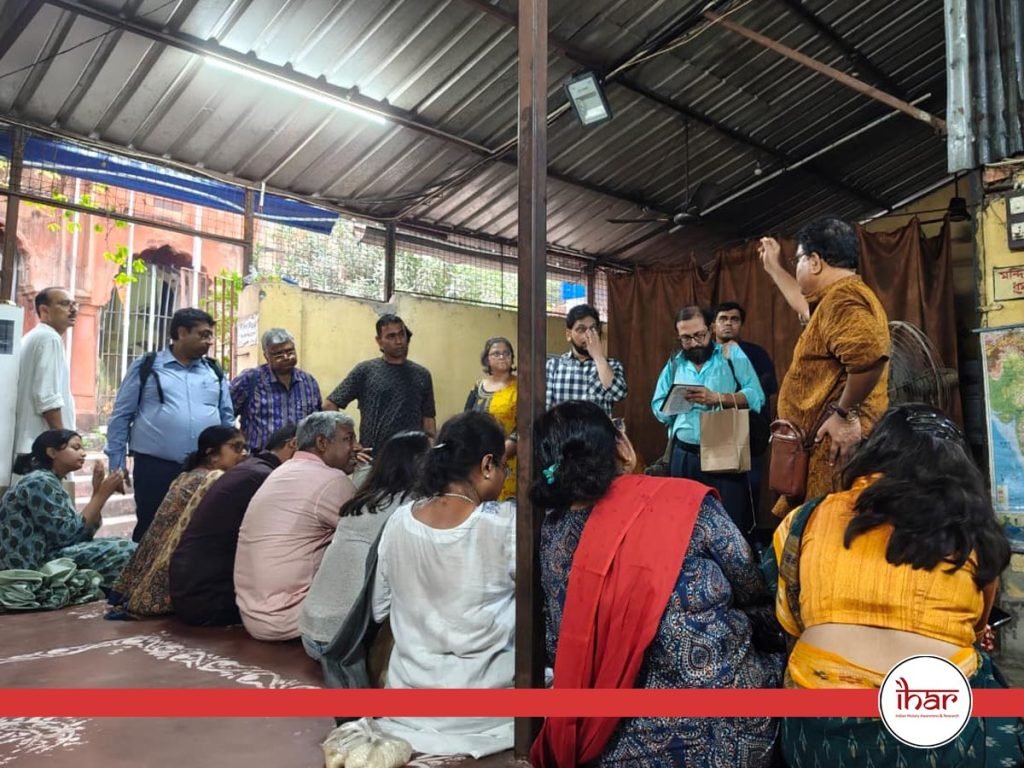
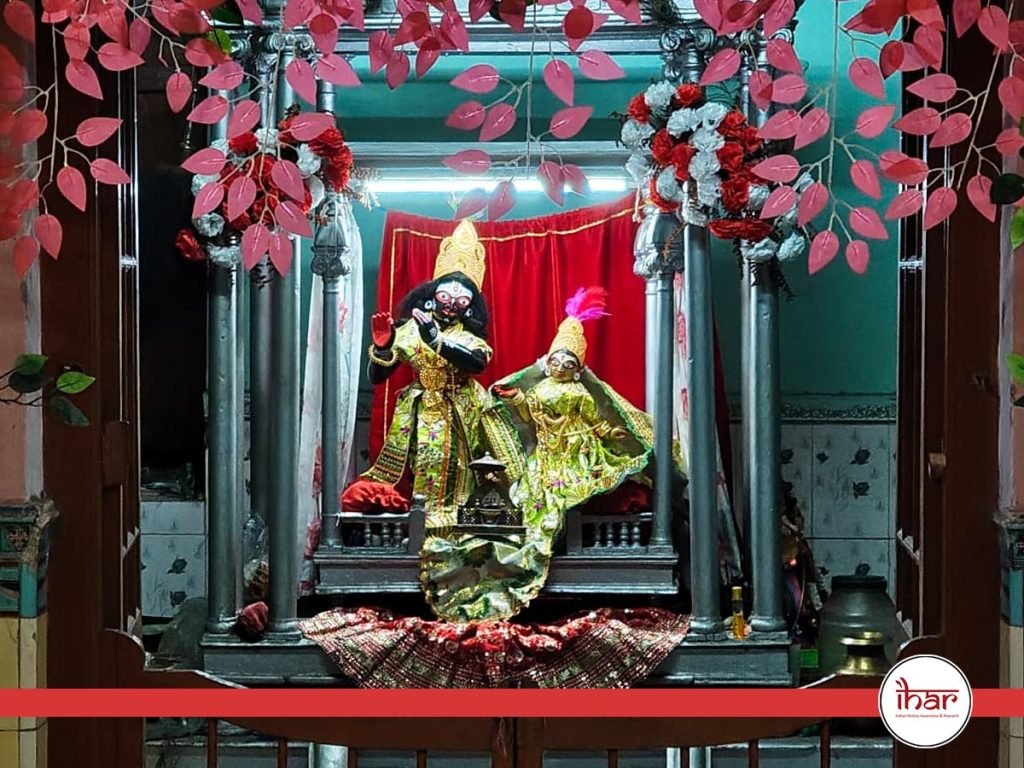
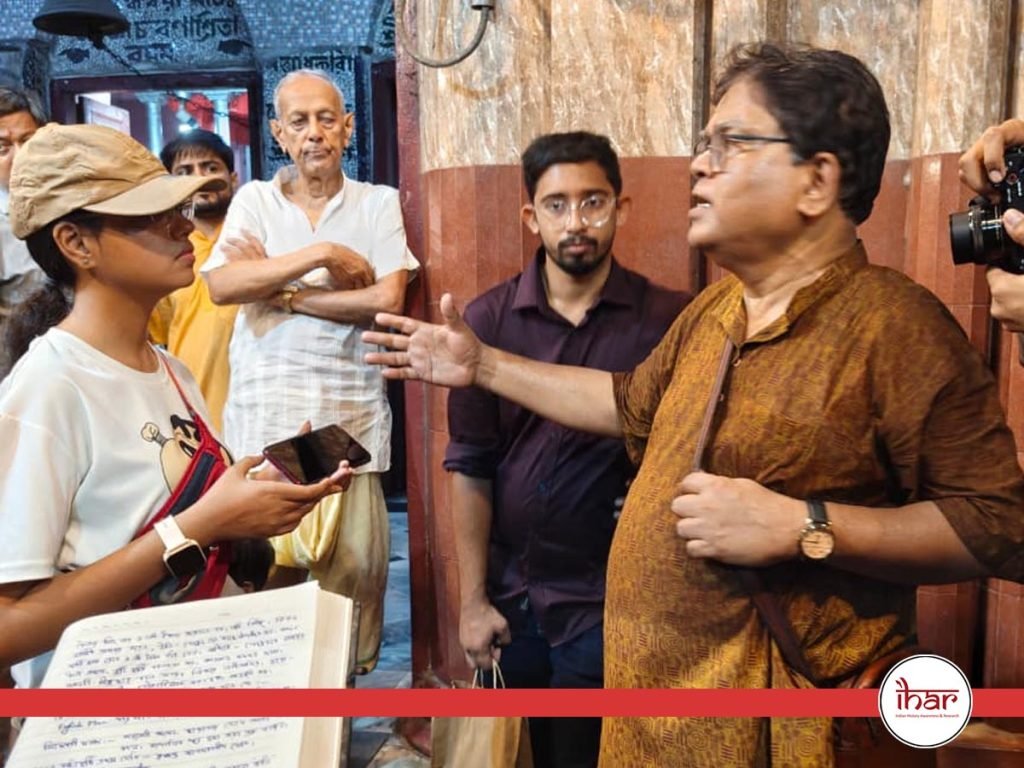
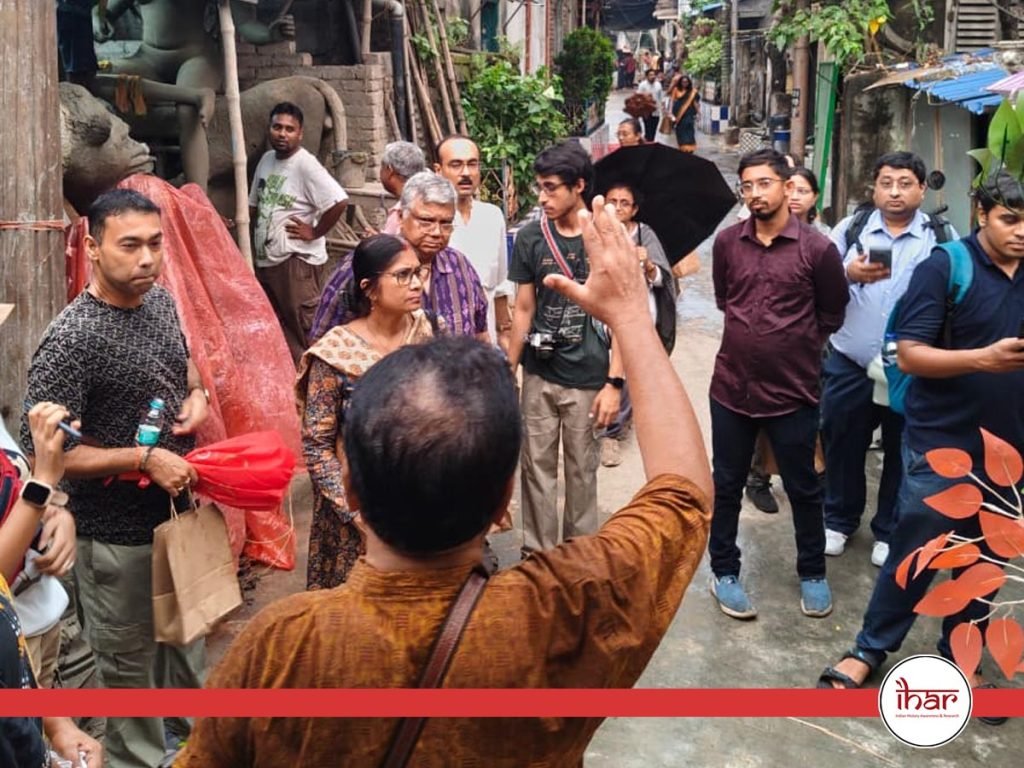
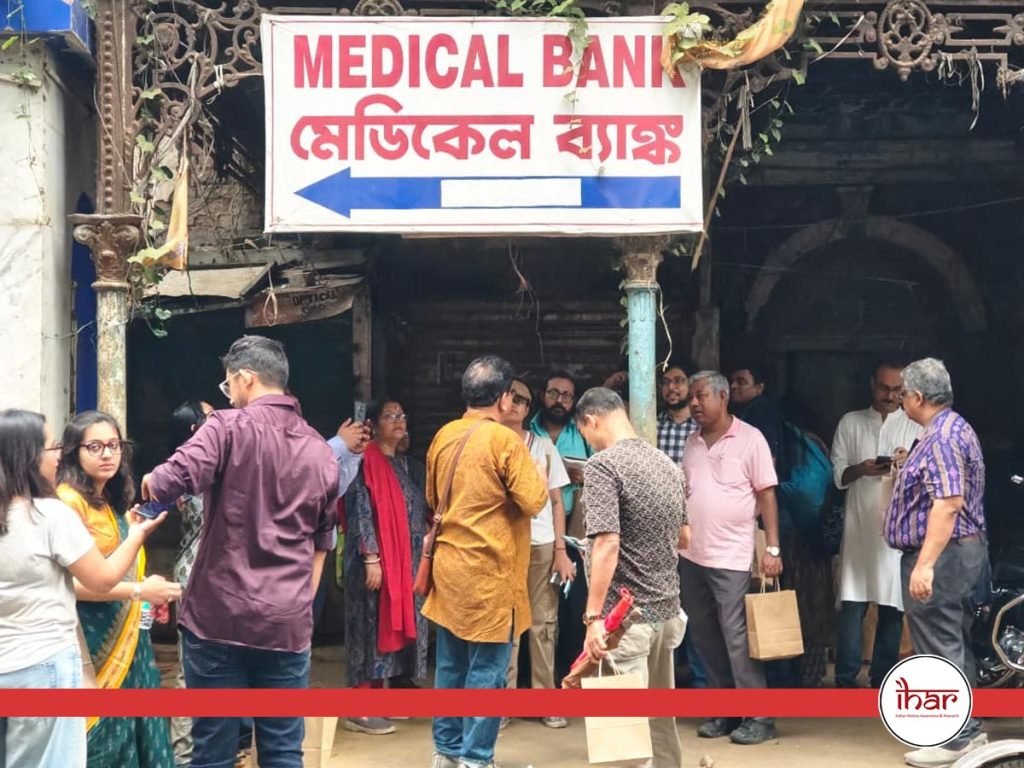
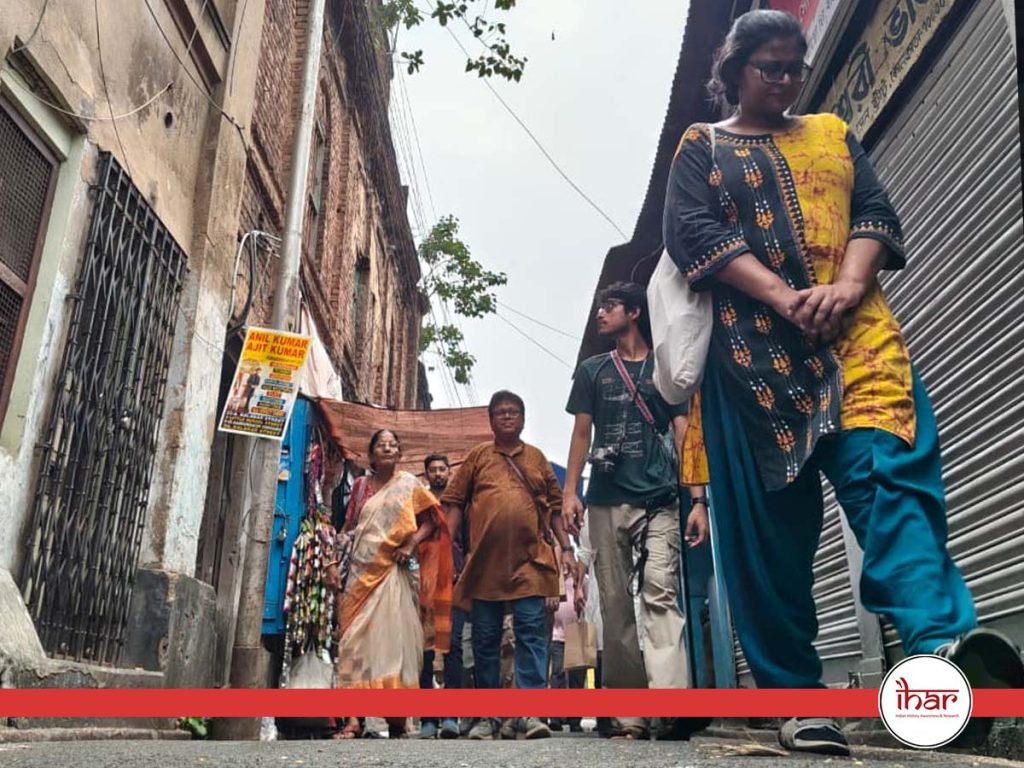
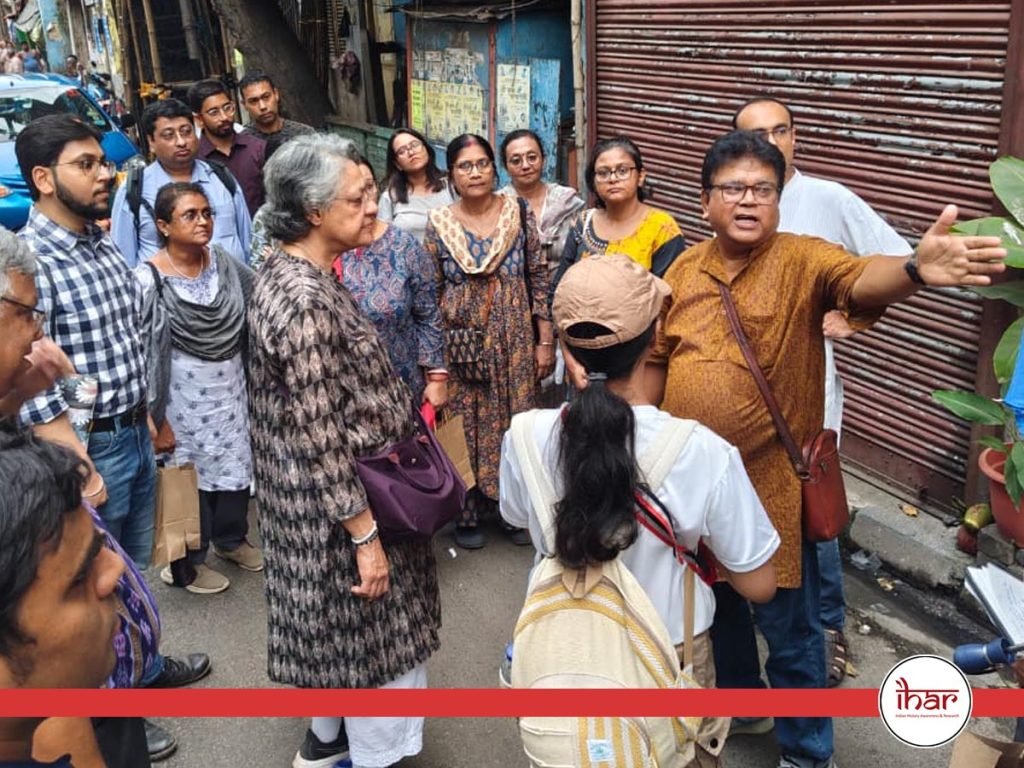
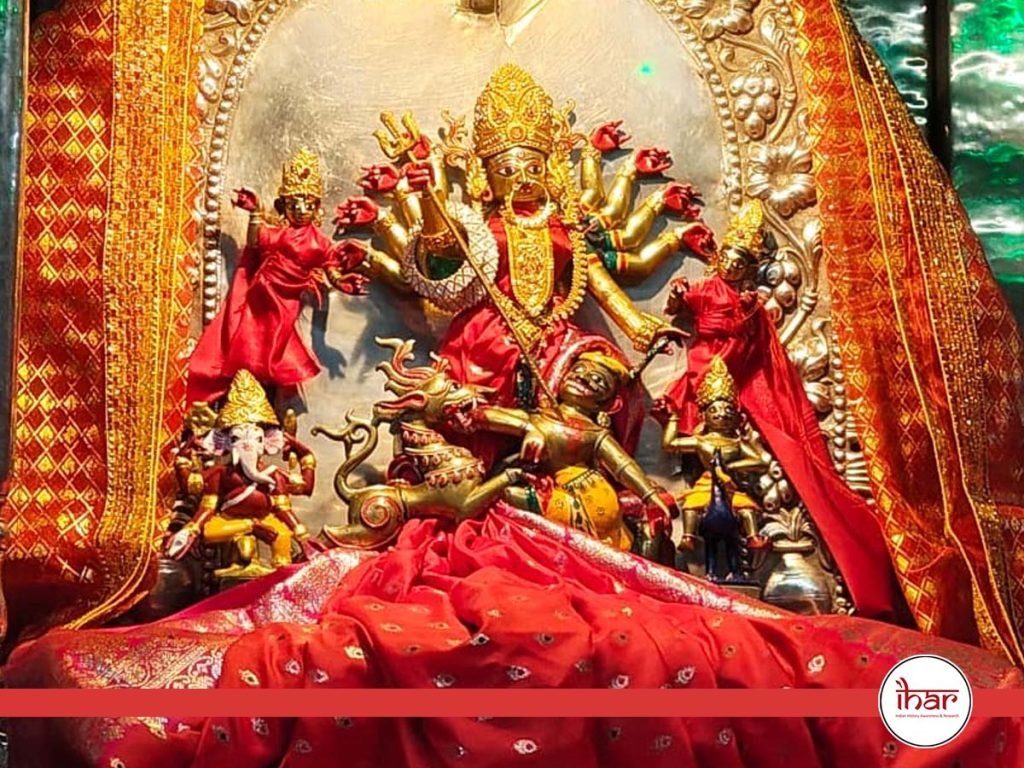
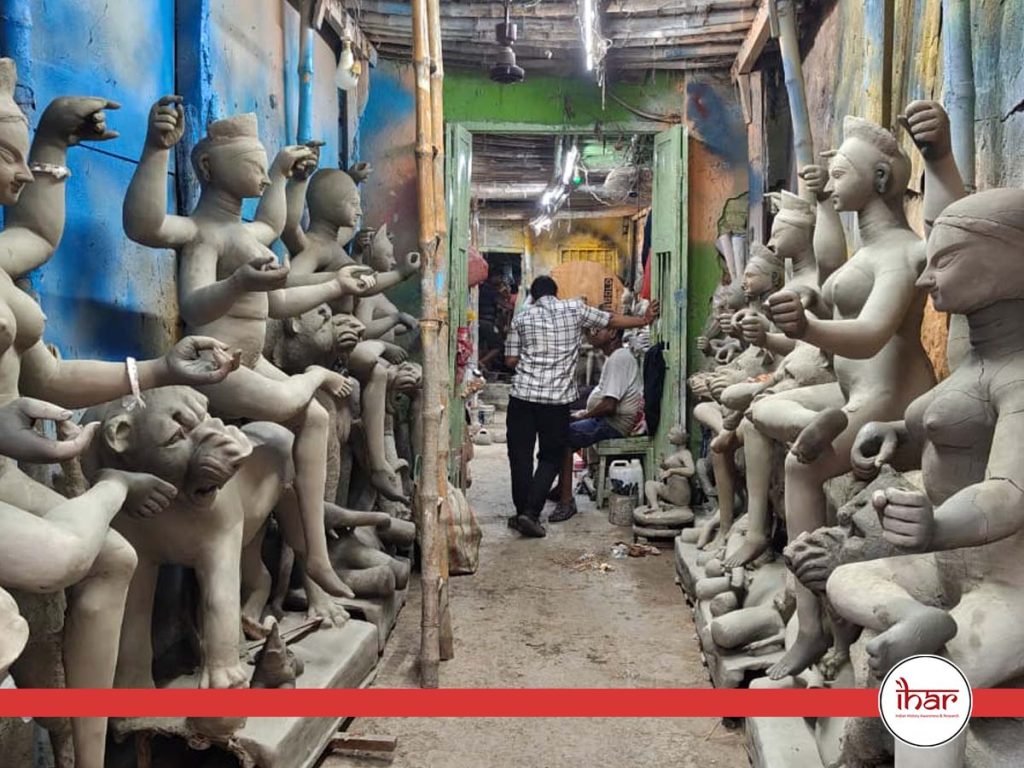
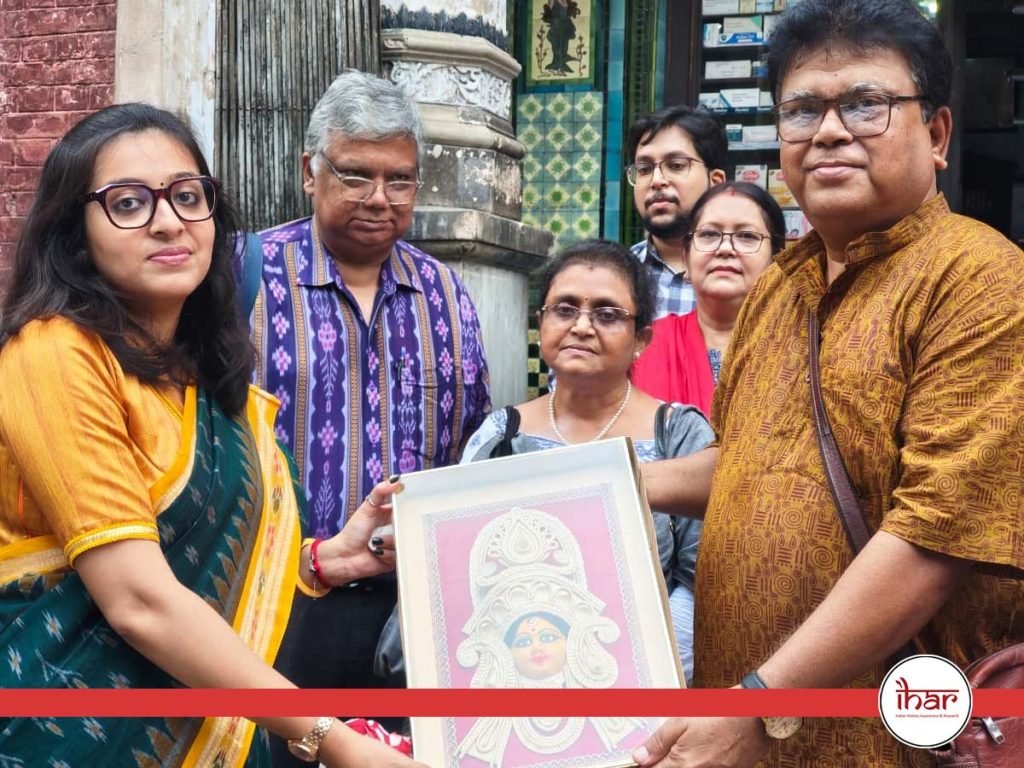
articles
Preserving Bengal’s Intellectual Legacy: IHAR West Bengal Chapter Undertakes Detailed Survey of Uttarpara Joykrishna Mukherjee Public Library
Published
1 month agoon
September 20, 2025By
Suprabho Roy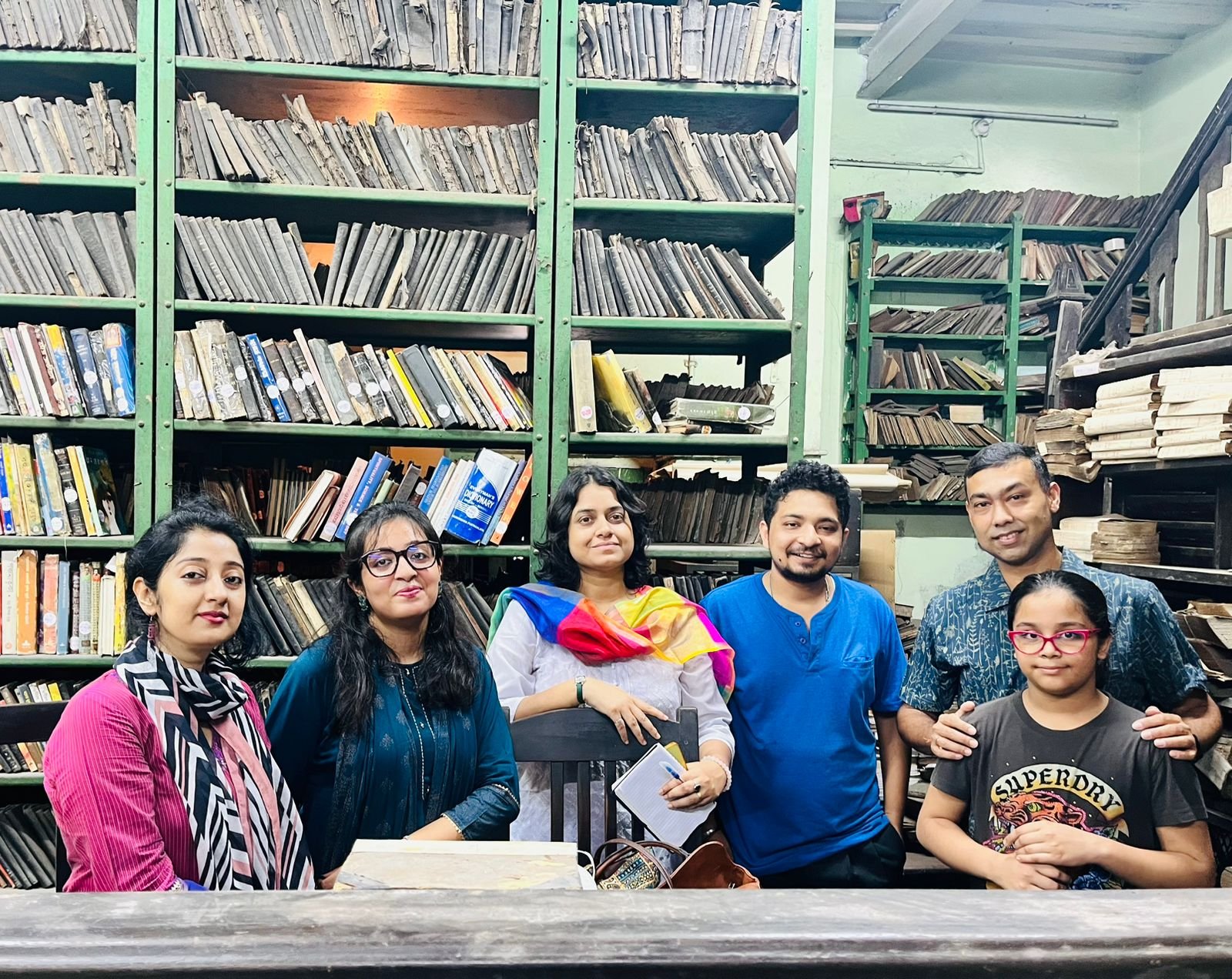
The site visit report on the Uttarpara Joykrishna Mukherjee Public Library is a comprehensive survey conducted by the Indian History Awareness Research (IHAR) team, highlighting the library’s unparalleled status as a treasure trove of rare manuscripts, books, and archival materials crucial for understanding Bengal and India’s cultural and intellectual heritage. This survey was prompted by concerns raised by the descendants of Shri Joykrishna Mukherjee regarding the fragile state of invaluable collections within this historic institution. As an independent organization committed to heritage conservation, IHAR assessed the library to recommend steps for its safekeeping, digitization, and modernization, thereby continuing the library’s legacy as a pillar of learning and knowledge since its inception in 1859.
The project was overseen by Project Director Shri Surya Sarathi Roy, Director of India Operations at IHAR. The IHAR team comprised notable members including Shri Bhujang Bobde (Director, Karnataka Epigraphic Conservationist Archives), Ms. Manideepa Basu (Executive Member, Indian Museum), Ms. Mouli Roy (Executive Member, National Library), and Shri Sumit Ganguly (Co-Convenor Academic, IHAR), among others. Their collective expertise in history, museology, conservation, and law was pivotal in conducting a detailed evaluation of the library’s current condition and proposing actionable measures for its preservation.
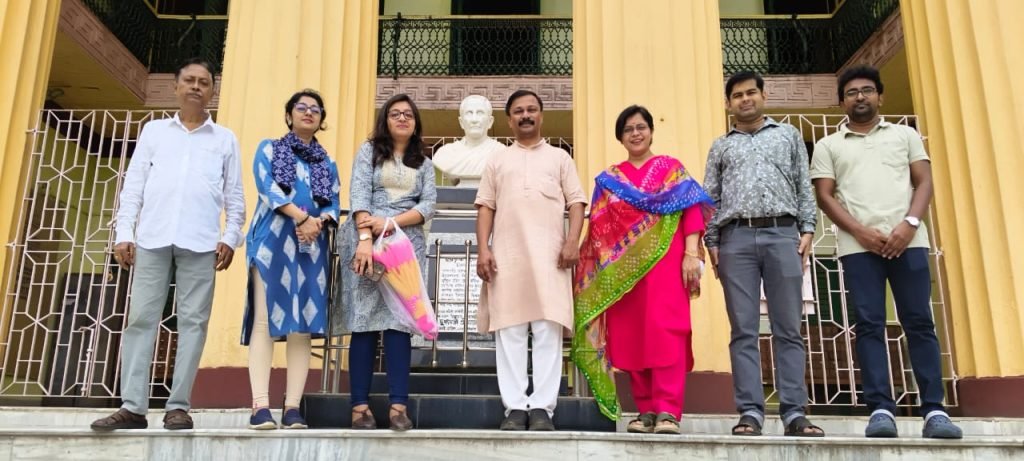
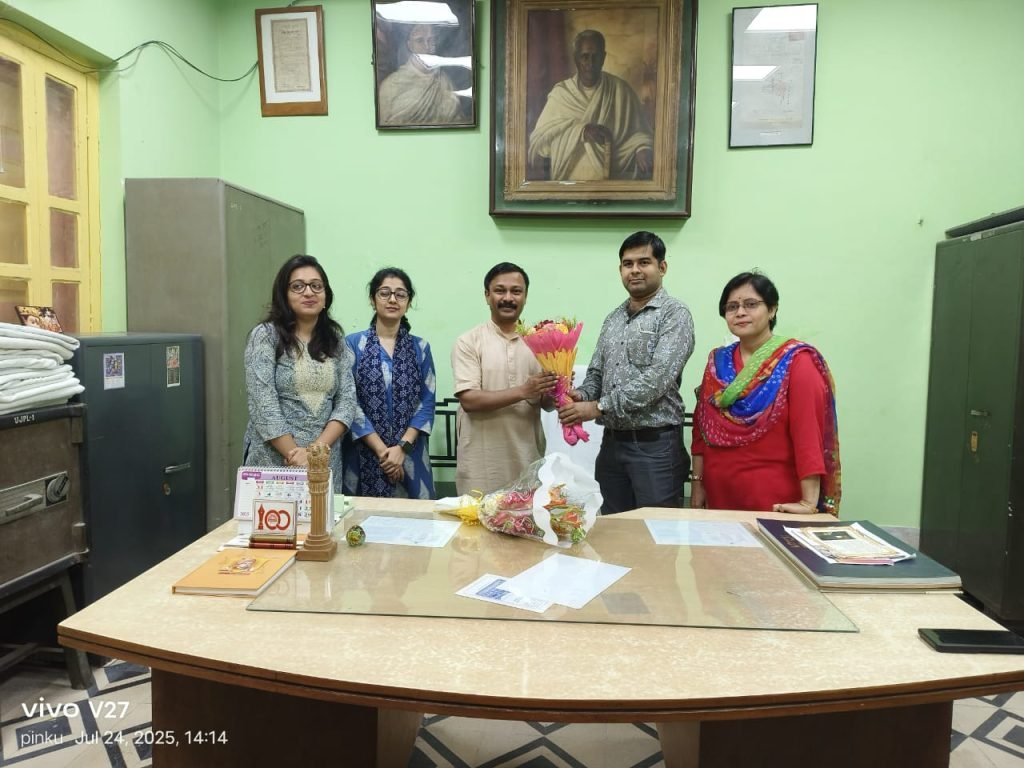
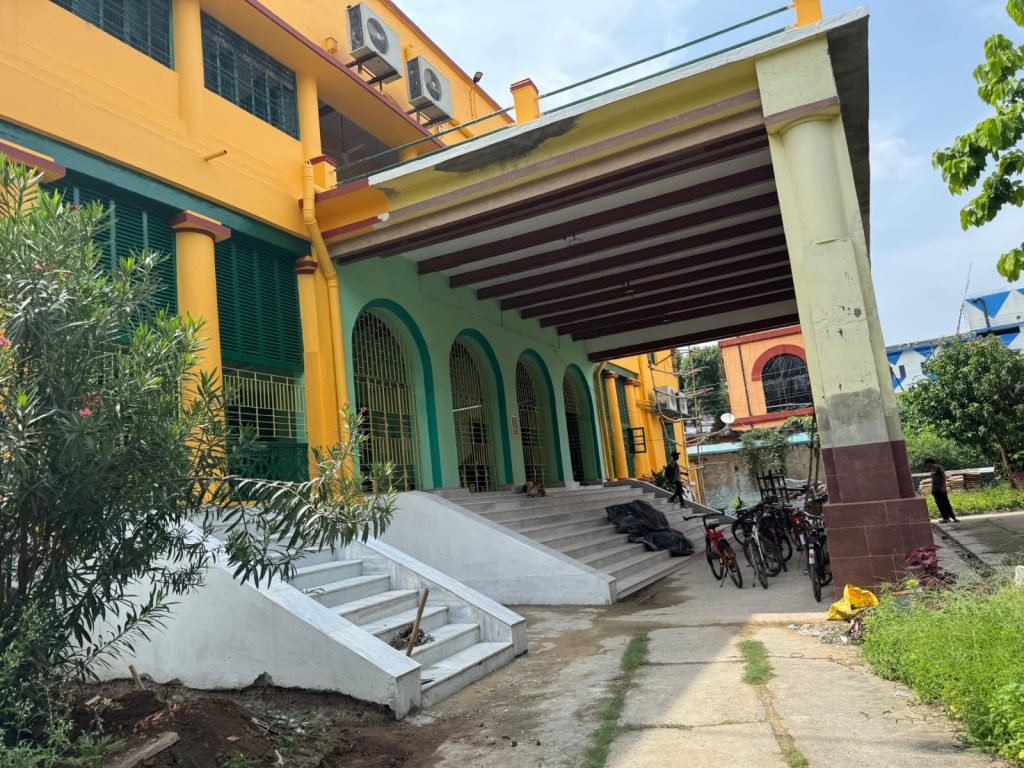
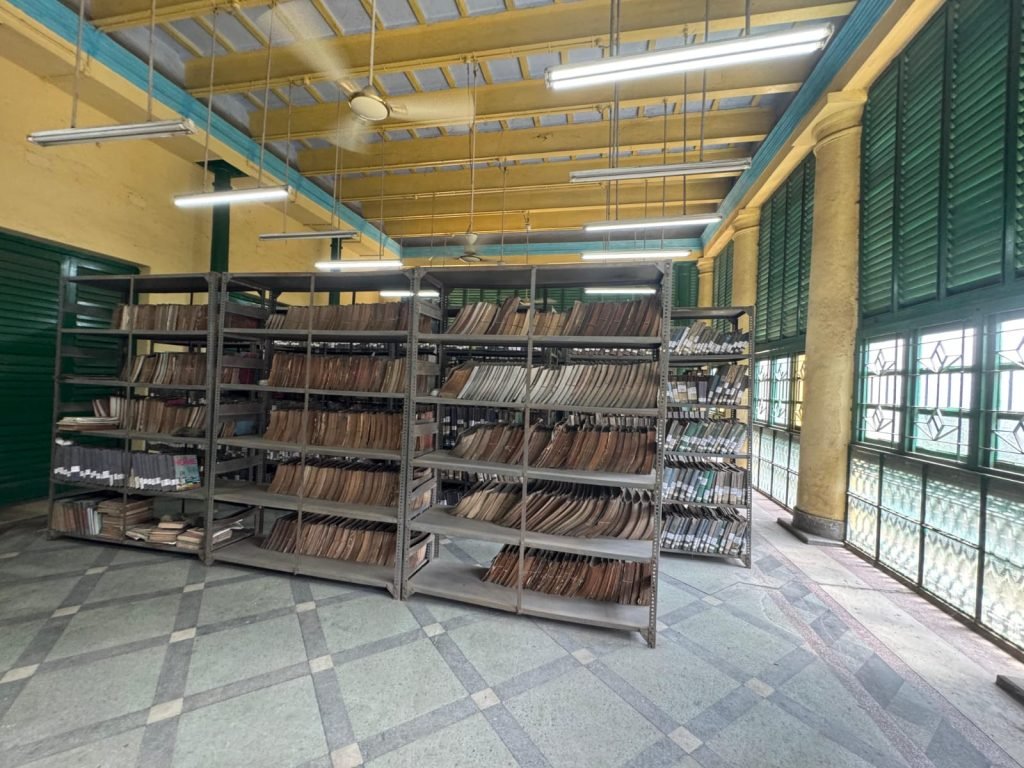
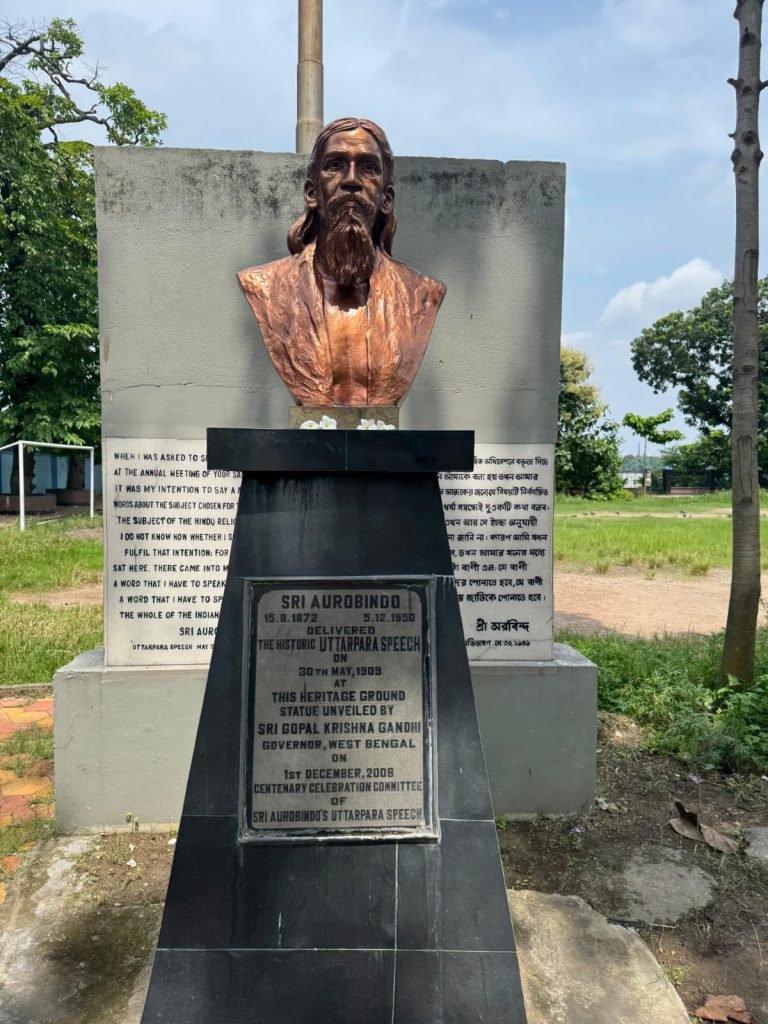
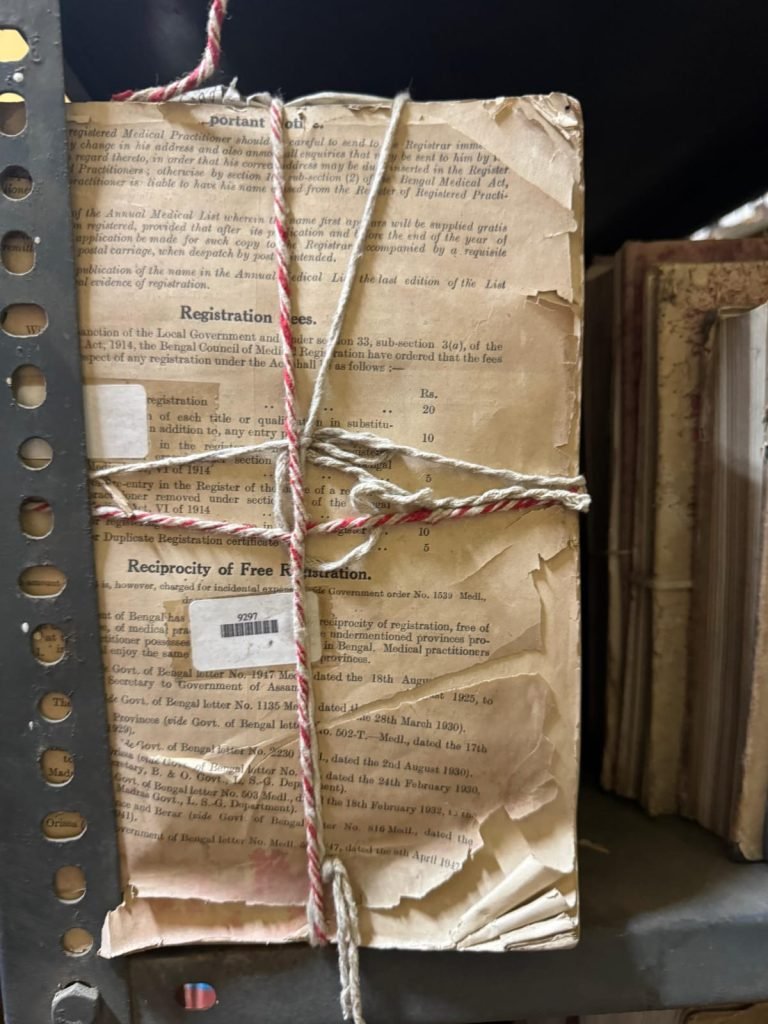

CONSTRUCTING GENDER IDENTITIES IN DEATH : RETHINKING MORTUARY ARCHAEOLOGY THROUGH THE EVIDENCE OF SINAULI

Rediscovering Sutanuti: IHAR WB CHAPTER’S Second Heritage Walk

Preserving Bengal’s Intellectual Legacy: IHAR West Bengal Chapter Undertakes Detailed Survey of Uttarpara Joykrishna Mukherjee Public Library

Reviving Bengal’s Intellectual Heritage: IHAR West Bengal Chapter Undertakes Detailed Survey of Chaitanya Library in Kolkata

NATIONAL ARCHAEOLOGICAL CONFERENCE IGNITES SCHOLARLY DISCOURSE WITH LAUNCH OF IHAR MP-CG CHAPTER

Bharat Varsh – A Cradle of Civilzation – Panel Discussion

Bringing our Gods back home – A Conversation with Shri Vijay Kumar

Panel Discussion on Sati

Bengal’s Glorious and Diverse Heritage- Traditions and Festivals – Panel Discussion

IHAR – World Heritage Day – April 18th 2025 updates

Debugging the wrong historical narratives – Vedveery Arya – Exclusive podcast

The Untold History Of Ancient India – A Scientific Narration

Some new evidence in Veda Shakhas about their Epoch by Shri Mrugendra Vinod ji

West Bengal’s textbooks must reflect true heritage – Sahana Singh at webinar ‘Vision Bengal’

Bringing our Gods back home – A Conversation with Shri Vijay Kumar
Trending
-

 Events2 years ago
Events2 years agoBharat Varsh – A Cradle of Civilzation – Panel Discussion
-

 Videos2 years ago
Videos2 years agoBringing our Gods back home – A Conversation with Shri Vijay Kumar
-

 Videos11 years ago
Videos11 years agoPanel Discussion on Sati
-

 Events7 months ago
Events7 months agoBengal’s Glorious and Diverse Heritage- Traditions and Festivals – Panel Discussion
-
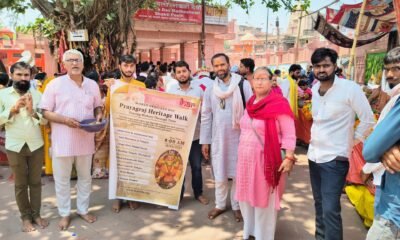
 Events6 months ago
Events6 months agoIHAR – World Heritage Day – April 18th 2025 updates


